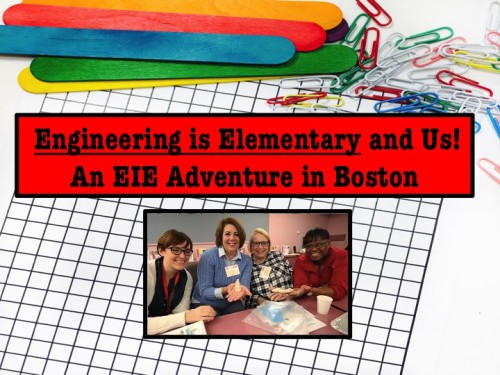
Looking for an amazing and complete integrated engineering program for your school? Want units with literature, math, science, cultural connections, characters with diverse backgrounds, and fascinating activities for a wide range of abilities that have been tested all over the country? We know just where to send you! Engineering is Elementary at Boston’s Museum of Science has all that and so much more. Known informally as EiE, it is on the top of our list for great resources to meet a wide variety of needs and budgets in any STEM program.
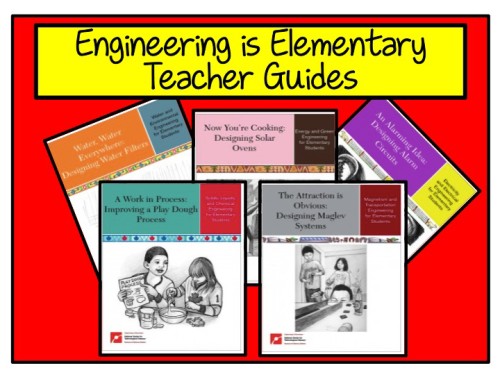
Engineering is Elementary is a rigorously researched program of 23 integrated engineering units for grades 1-5. With teacher guide binders and kits, the curriculum consists of three components: teacher guides, storybooks, and materials kits. The teacher guides have background information, detailed lesson plans, and student handouts. The storybooks introduce a child from somewhere in the world who solves a problem through engineering. The optional materials kits include enough materials for 30 students. Every unit uses a field of engineering as a unifying theme. Units can stand alone and you can use EiE units in any order.
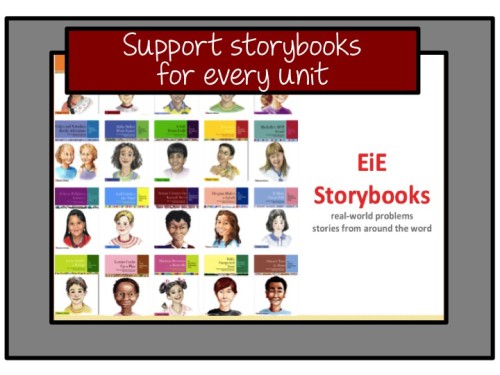
The Museum of Science’s EiE curriculum has always been a resource that we have not only used in our own classrooms but strongly encouraged other educators to use. Although we had attended several one day trainings on the kits, last month we had the distinct pleasure of attending a three day Teacher Educator Institute at the Museum of Science in Boston. Our goal was to learn how to lead teacher development workshops on the Engineering is Elementary kits. Before attending, we knew that the Institute would be informative, and we would be well prepared to assist other teachers using the EiE program. However, the actual experience well surpassed our expectations!

The EiE Staff at the Museum of Science was as meticulous training the teachers as they have been in researching and developing their curriculum. With group leaders taking participants through the hands-on activities for various kits, attendees experienced the STEM challenge thorough the lens of a student, a teacher implementing it, and also as an educator leading a professional development session. The workshop attendee numbers were kept at a level that made it conducive to share ideas and discuss the purpose of each part of the kit. Although we were given great resources by the EIE staff, being able to discuss implementation of the kits with educators from many different settings was invaluable. One important note that we discussed is that it is possible to just purchase the manual and provide one’s own materials and supplies for each unit. This is easier for some units more than others, so it is important to read the supply list carefully.
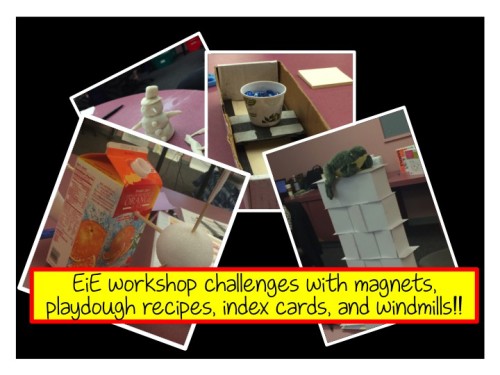
The normal stress of attending a workshop out of town just did not exist. Those of us attending the Institute were very well taken care of, making us look forward to each day. Each morning, a lovely continental breakfast awaited us and at midday, a tasty lunch helped to revitalize us for the afternoon. The location of the museum made it convenient to walk to hotels and have great dinner options as well. The entire staff was available and supportive throughout the time we spent there. We know that everyone left feeling like they had wonderful support and contacts for any future questions or needs after we got back home.
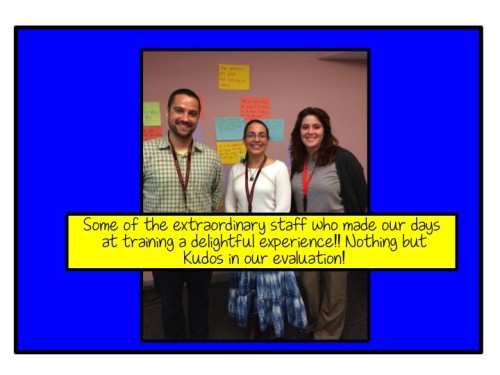
EiE is not just about the classroom kits and manuals. If you haven’t visited the EIE website recently, it definitely deserves another look. EIE has been adding many resources to help teachers who are implementing their lessons in their classroom. Although some of the resources are still being created, below are some of the not to be missed resources:
- A Blog to support teachers in implementing EIE. This is where questions from individuals are answered. The blog archive also has a wealth of information.
- EiE Classroom Videos. New videos are being added all the time.
- Classroom videos show expert teachers using EIE in real classrooms. All 20 units can be viewed.
- Spotlight videos highlight explain effective classroom practices for teaching engineering.
- Coming soon will be video Moments which will focus on topics about teaching engineering such as NGSS standards and Engineering Habits of Mind.
- How to videos cover the other crucial parts of teaching engineering such as organizing and preparing materials.
- Professional Development Workshops information. The three different workshops are explained and updated as new training are added. Can’t travel to Boston? The Museum of Science will send their trainers to your school.
- Three day Teacher Educator Institutes in Boston prepares teachers to lead professional development workshops
- Everyone Engineers! Prepares teachers to integrate engineering and science in the classroom
- Linking the E & M in STEM will give teachers strategies for integrating EIE curriculum into the Common Core Math Curriculum
- A Newsletter for up-to-date information about all things EIE. Find out about important information such as available scholarships to attend workshops.
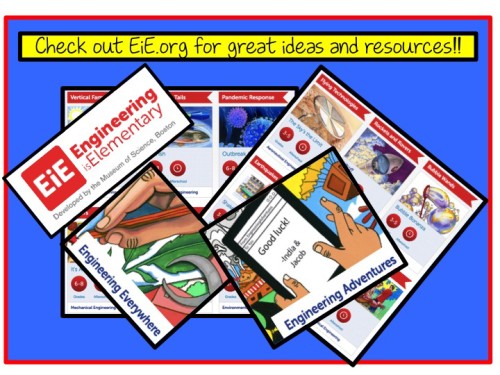
EiE not in your budget this year? Check out what is available for free!!
Have you heard about EIE’s Engineering Adventures? Aimed at grades 3-5, it is an afterschool curriculum composed of 7 lessons. Students follow the adventures of two kids, India and Jacob while they solve real world problems. Topics include rockets and rovers, earthquakes and bubble wands. Sound interesting? The best part is that all lessons and teacher guides are able to be downloaded for free!
Do you teach middle school? An afterschool curriculum has also been developed for students in grades 6-8 called Engineering Everywhere. Students explore such topics as vertical farming, prosthetic tails for fish and bioplastics. Incredibly enough this too is free and available to download.
Whether you are sampling their free lessons, purchasing their manuals or kits, or attending an EIE sponsored workshop, you will be delighted with the quality of their programs. The Engineering is Elementary staffs’ devotion to high quality 21st Century STEM skills is exemplary, inspiring, and their programs are well worth investigating for your students.
About the authors
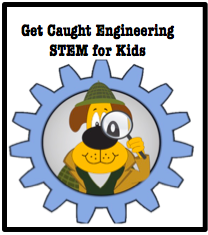
Wendy and Cheryl are the co-creators of Get Caught Engineering, a consulting company that develops STEM curriculum and provides workshops to teachers, families, and students. Their website and blog is at www.getcaughtengineering.com. In addition, Get Caught Engineering has an Instagram page, a Pinterest page, a Facebook page, and a Teachers Pay Teachers Store filled with ideas and resources.

Leave a Reply
Your email is safe with us.